Call to Arms
Following the outbreak of the First World War, thousands of Canadians flocked to enlist. The scene in Edmonton, Alberta, was no different. The Canadian Expeditionary Force was formed in the summer of 1914, and two formations from Edmonton were to form part of the 1st Canadian Division that would leave for Europe before the end of the year.
1914

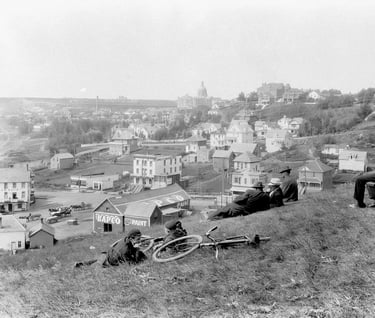
The First Contingent
The call to arms and saw the authorization of Edmonton's two existing militia regiments. These units quickly reached full capacity and departed to the front. Leaving many in Edmonton still waiting their opportunity to join the Canadian Expeditionary Force.
Griesbach's Answer
Amongst those who departed Edmonton for the front was 37 year old William Albatros Griesbach. A past mayor of Edmonton, he had been asked to return to Edmonton in 1914 to form, raise and command the soon to be formed 49th Battalion.
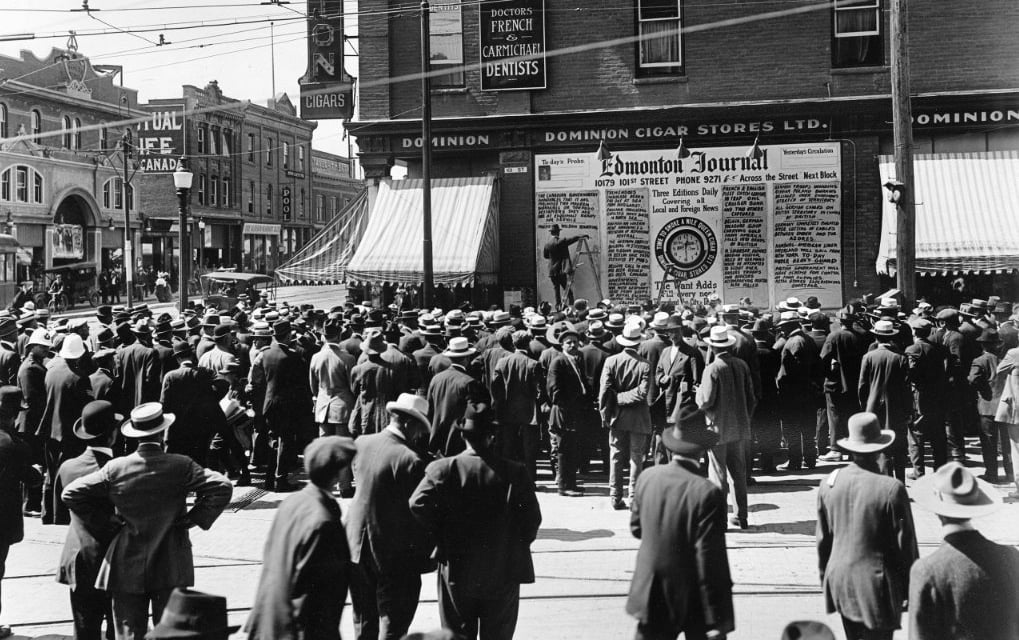

New Beginnings
The 4th of January 1915 marked the first day of recruitment. In spite of the frigid weather, nearly 200 men were found waiting outside the recruiting depot at Victoria Armouries when the doors opened. Subsequent days yielded more and more men. Within only a few weeks the 49th Battalion was at full strength totally over 1,000 officers and men from all parts of Edmonton's society.
1915
Early days
Many of the recruits had little to no military experience upon enlistment. Quickly transitioning men from civilians into efficient soldiers, was the name of the game. Initially men trained without uniforms, rifles and equipment. This would change and with it a new sense of pride in oneself.
Training
Initially without a barracks to base themselves from, the Eastern side of the city's exhibition grounds were revamped and put into military use. From physical and military drill to route marches, the training undertaken there and across Edmonton was basic but fundamental for all.
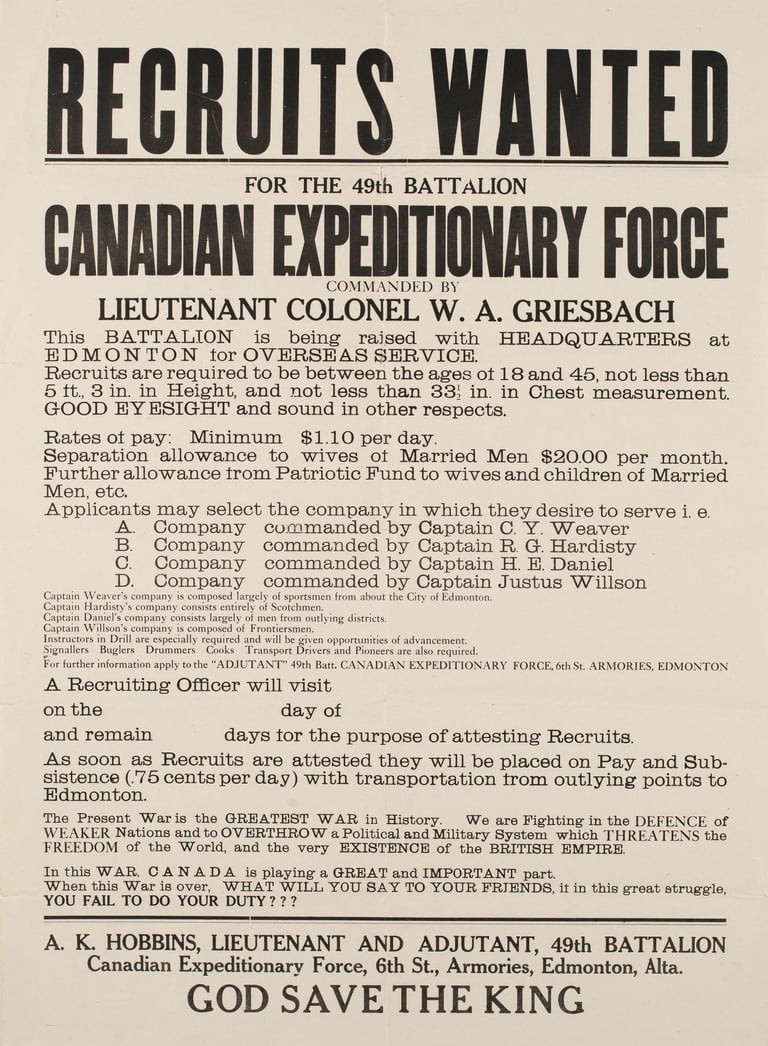

To be a Fortyniner
As time progressed, there was ever increasing demand to join the 49th Battalion but not enough room. Some new recruits were discharged on the grounds of being unlikely to become efficient soldiers. Other men took their places. The men were hand picked and the best Edmonton had; they were Fortyniners.
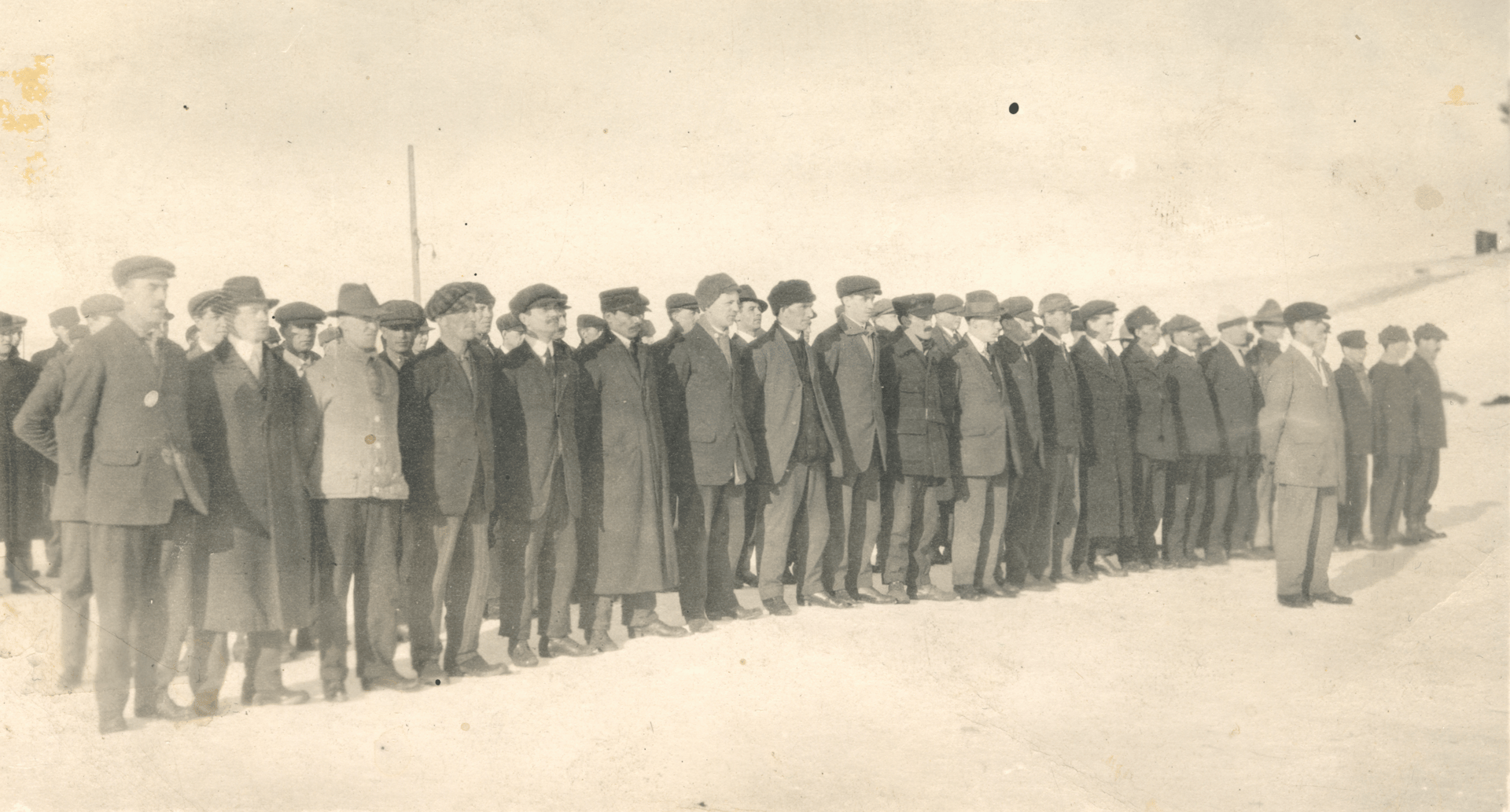
Raw Recruits
Training at the Edmonton legislature grounds
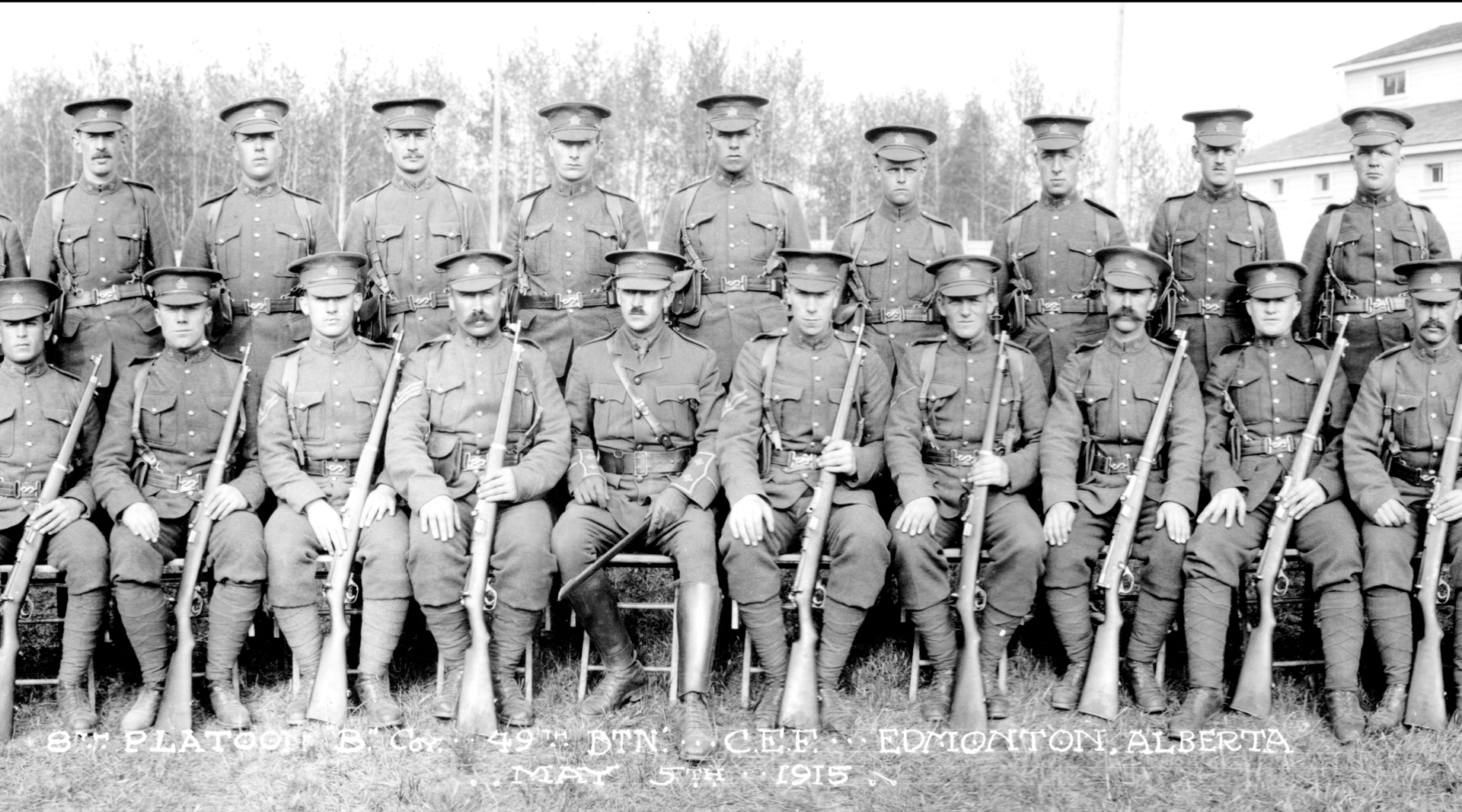
Fortyniners
Training at the Edmonton Exhibition Grounds
The long journey
On the 29th of May, the 49th Battalion departed Edmonton by train and later ship bound for England. A trip spanning over 7,000 kilometers and 16 days. Far from home, interactions between friends and family in Canada were restricted purely to letter writing. A new reality that continued for years to come.
England
Based in Shorncliffe, the 49th Battalion continued their training. Lengthy route marches, musketry and bayonet instruction were all drilled under the beating summer sun. New surroundings were exciting but the monotony of training weighed on everyone awaiting their time to go to the front.
France
In early October, news was received that the 49th Battalion was to be sent to France. Arriving in Boulogne, France, on the 9th of October, the men began their last stretch to the frontline. First being packed into overcrowded boxcars and later by marching. They had finally reached the Western Front.

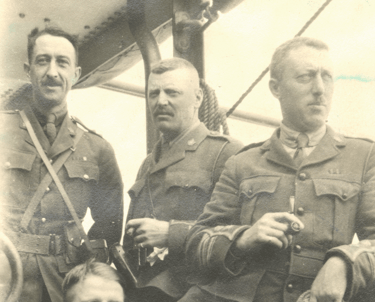

Trenches at Last
October 1915-March 1916
Trenches at last
The 16th of October marked the first time that Fortyniners went into the frontline. For many, it was an exciting time. Months and months of training had culminated into this. It was clear to all involved though that this was no longer the parade ground. They had finally reached the front.
Working Parties on the Kemmel Front 1915-1916
Apprentices at Arms
Night to night, and sometimes day to day, laborious duties of bringing supplies forward was endured. In the cold and dark winters of Flanders, and traversing over muddy and uneven ground, it was a most taxing and dangerous endeavour.
"Many times work of this nature would be carried out at places where, when the enemy would throw up star shells, which illuminate for a considerable radius, every man had to remain perfectly still until the flare had burned itself out. The discovery of one of those working parties in such close proximity to the enemy would mean that, machine guns would immediately be turned on them and a few shrapnel shells burst overhead."
Private Patrick Meehan, 49th Battalion.
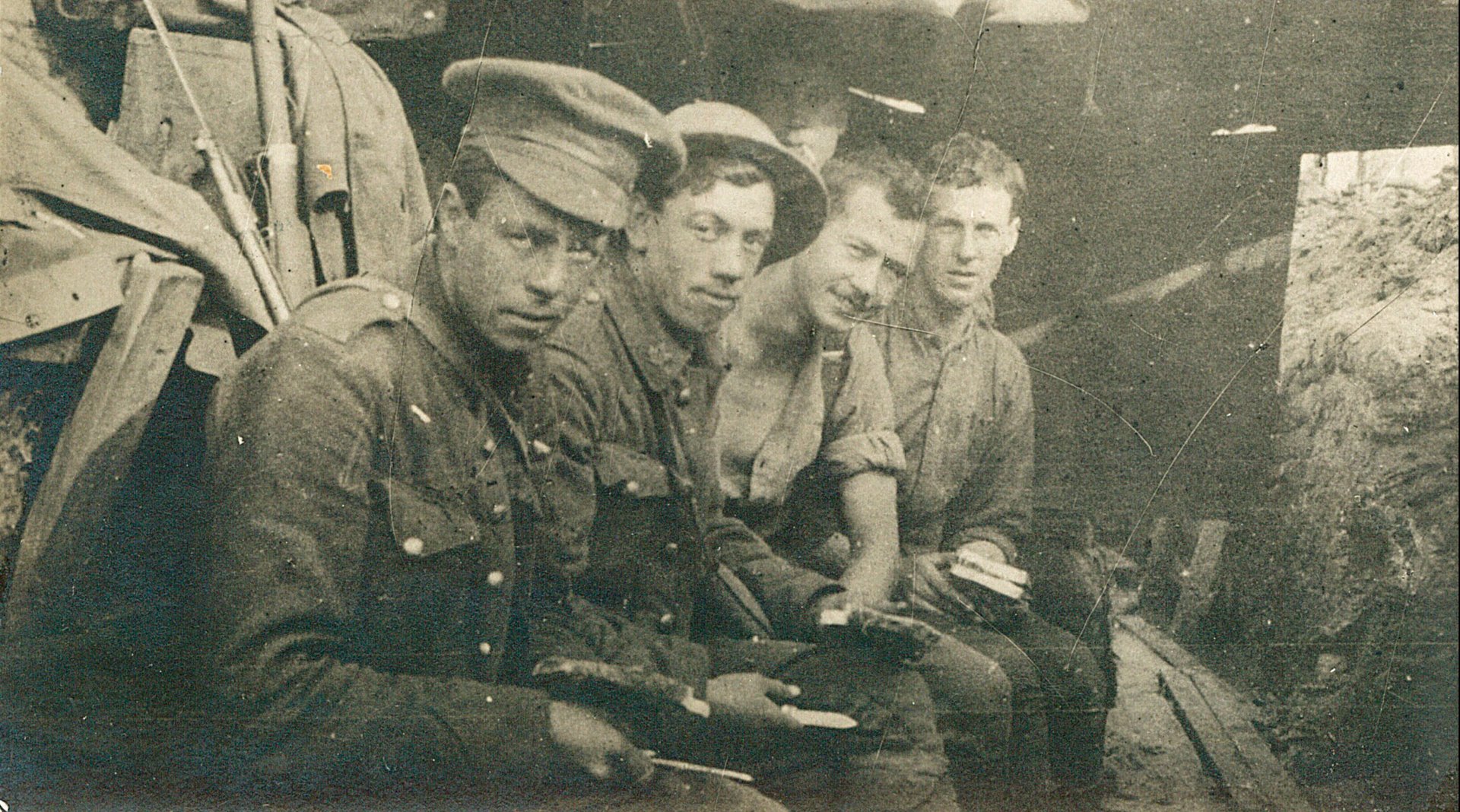
The Ypres Salient
March-May 1916
First Bombardment
During the first trip into the trenches in late March 1916, the 49th Battalion came under their first serious bombardment. The power of the bombardment left a number killed, wounded and shell shocked. Some Fortyniners were entombed in dugouts whilst others bravely dug them out under fire.
Hooge
In early April, trenches near the village of Hooge were occupied. The conditions were poor and the enemy trenches near. The Battalion came under their first trench raid on the morning of the 6th of April losing several men killed, wounded and others taken prisoner.
"I realized the fact that this bombardment was for a certain purpose and I told all the troops around there, which was Numbers One and Two platoon of “A” Company, that when the bombardment settled down a little to get up on the parapet at once. I suspected they were coming over and sure enough they did., and we were ready and we drove off the attack."
May 1st, 1916
For several weeks, the 49th Battalion performed trench rotation after trench rotation in Sanctuary Wood. Meanwhile the Germans were probing the defences for an upcoming attack. On the 1st of May 1916, the trenches occupied by the Forty-Ninth came under a heavy and prolonged bombardment accounting for a number killed, wounded and shell shocked. When it abruptly stopped at 8:00 P.M., Lieutenant Ronnie Arthurs of "A" Company correctly predicted an imminent trench raid and directed his men to man the parapet.
Lieutenant R. C. Arthurs, 49th Battalion.
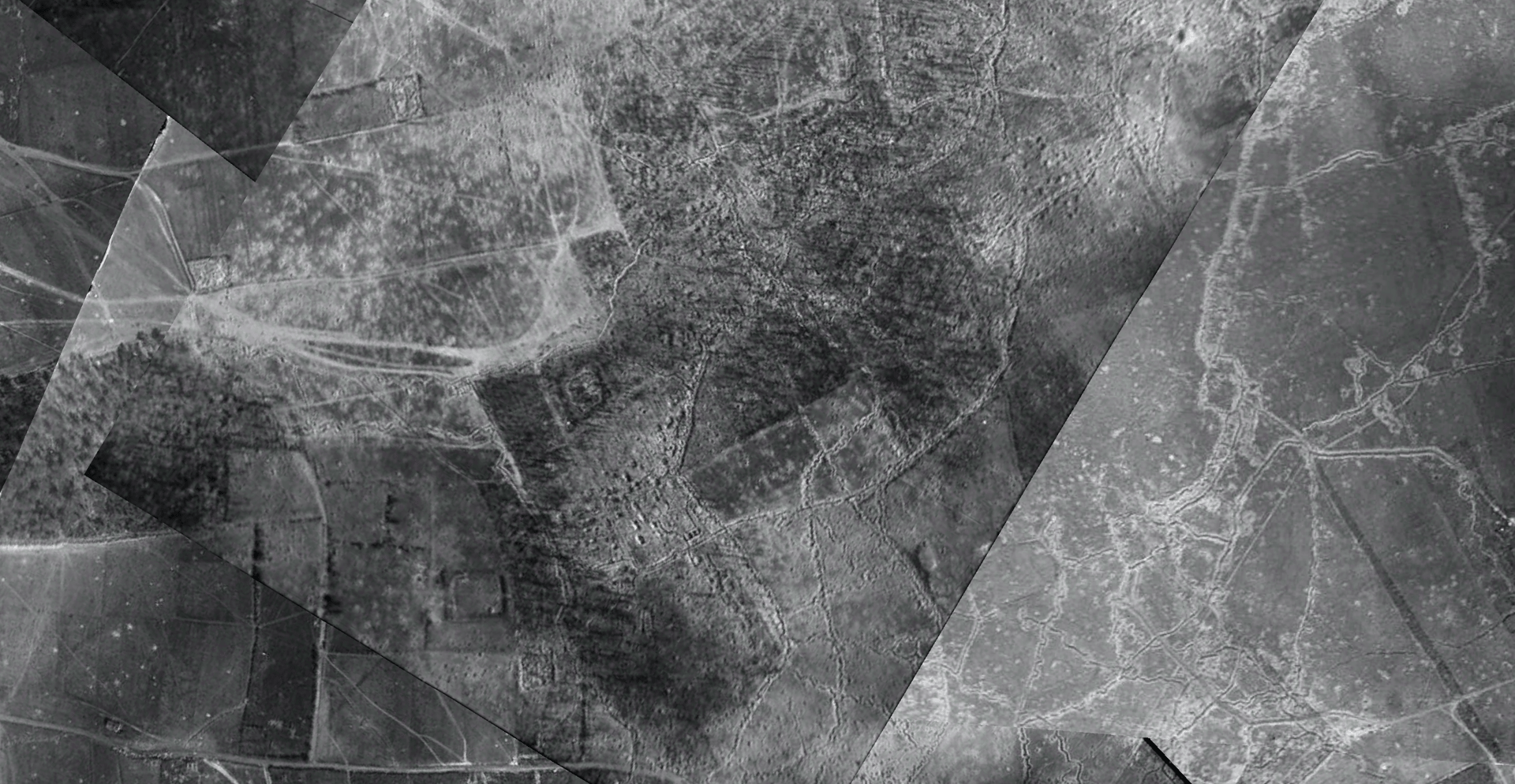
The June Scrap
June 2nd -5th 1916
The 2nd of June
On the morning of the 2nd of June 1916, a massive bombardment on the Canadian held line from Mount Sorrel to Sanctuary Wood had commenced. This was followed by an all out German infantry assault which resulted in mass Canadian casualties and found the Canadians holding the last reserve line before the city of Ypres.
Stand To at Camp
After 10 days on the frontline at Sanctuary Wood, the 49th Battalion had been relieved on the 1st of June. By the time of the bombardment and onslaught on the 2nd of June, they were encamped near the small village of Ouderdom for a period of rest. Orders were received to Stand To for Battle.
"Over the Top"
After several hours with no sign of the other Battalions, the 49th Battalion received orders to launch the counter-attack alone at 7:00 A.M. In broad daylight and in the face of horrific machine gun fire, the Forty-Niners were massacred. In the first wave was 18 year old Private Duke Palmer:
Private D.S. Palmer, 49th Battalion.
Into the Battle Zone
At noon, the bugles rang out signalling the 49th Battalion's call to the front. Travelling via Ypres, they received their orders for a counter-attack to be launched in Sanctuary Wood on the early morning hours of the 3rd of June. In spite of heavy fire, the Battalion reached their jumping off positions on schedule. The other two Battalions that were to participate in the attack were nowhere to be found. It was decided the counter-attack be delayed until they arrived.
“I could see men dropping all around. The rifle and machine gun fire was awful. I kept on going until there were only a few men left, and wondered why I had not been hit. Then we came to the conclusion that there was no use of a few of us going any further and that a live man was worth more than a dead one."
Endurance
With dozens already killed and wounded in No Mans Land, the survivors found refuge in the battered trenches and continued the fight from there. Amongst the survivors was Private George Leslie Adkins from Westlock, Alberta:
"We took what cover we could get in old trenches and were there all day... That night we were supposed to be relieved but the relief could not get in so we had another awful 24 hours during which they sent over the terrible high explosives & shrapnel but we held firm. Two or three times they nearly landed one in our trench. The force of the explosion threw us down and I couldn't hear nothing but ringing in my ears. I was hit on the head about four times but my steel helmet saved me. Then I had a bullet go right through a mess tin strapped on my back. I am going to keep it as a souvenir."
Private G.L. Adkins, 49th Battalion.
The Relief - June 5th 1916
On the 5th of June 1916, the 49th Battalion was relieved from Sanctuary Wood. Casualties were high: 51 killed, 266 wounded and 69 missing. The Fortyninth was a shell of it had been only a few days before but it was an important ride of passage in transforming it from a humble Battalion to one which earned distinction in ferocious fighting in the face of the enemy. The 49th Battalion had undergone it's baptism in battle.
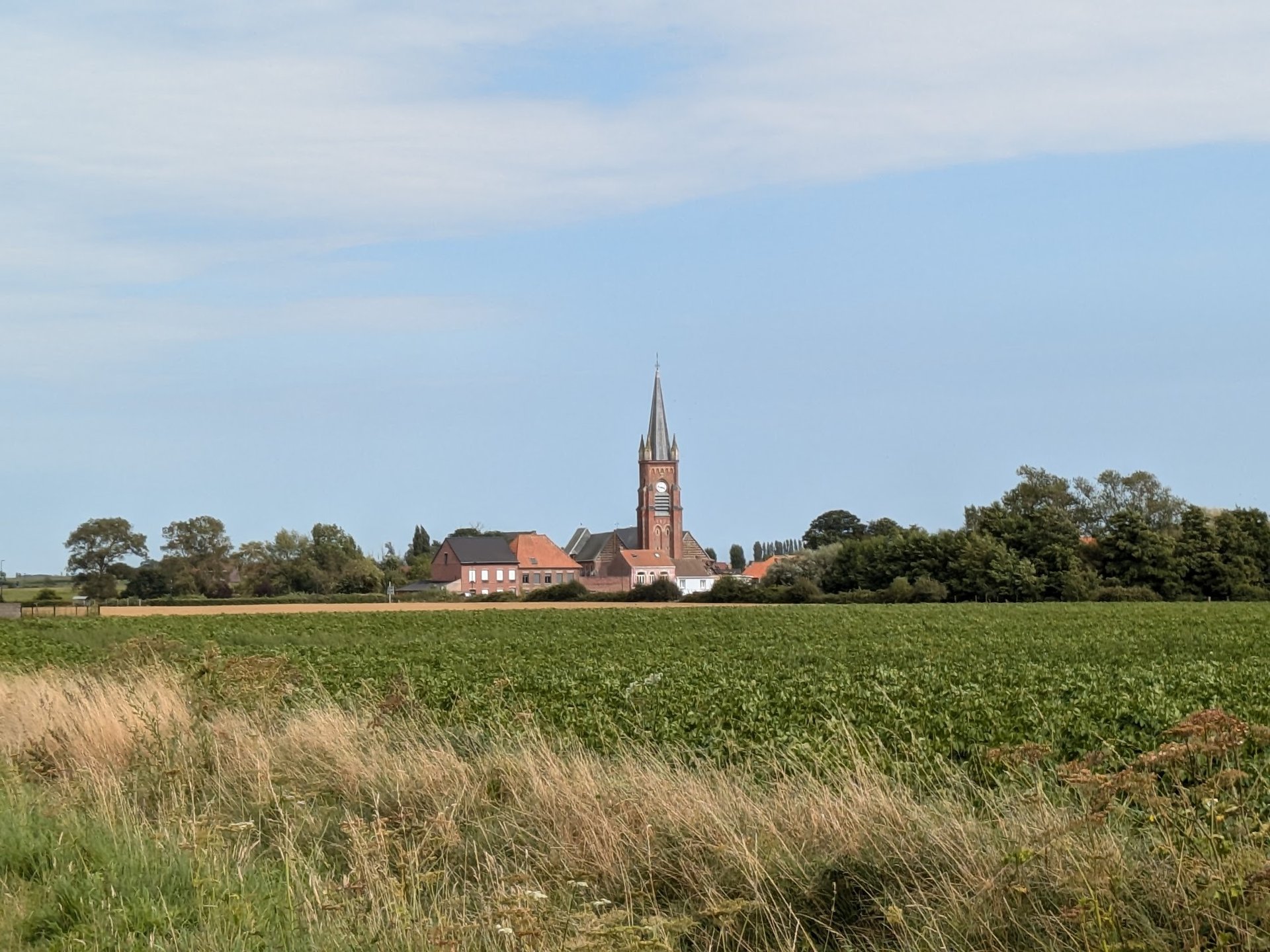
Winnezeele
June 1916
A shell of a Battalion
Following the heavy fighting, the 49th Battalion was exhausted and spent. Orders were received for the Battalion to move to the small village of Winnezeele. Well behind the lines, trenches, shells, death and stress of the frontline; Winnezeele proved was the new welcome home to the survivors of Sanctuary Wood.
The 66th Battalion
On the 11th of June, a large reinforcement draft of 400 men from the 66th (Edmonton) Overseas Battalion arrived to reinforce the understrengthed 49th Battalion. Welcomed with open arms, these new men changed the face of the 49th Battalion overnight but solidified it's status as the "Edmonton Regiment"
Rest & Estaminets
For the new draftees from the 66th Battalion, it was not only their first experience of the 49th Battalion but also their first experience of France and estaminets. It was a time of joys, fun and drink.
"A few of us also spent a nice evening in an Estaminet back of Winnizelle at the expense of Corporal Jack Warner. He headed the party but soon after arrival, left us eating and drinking while he entertained the landlord's daughter. We ran up a bill of 32 Francs and left him to pay the bill when he showed up later on. You can imagine the storm when he finally came back to billets. I mention these because I have had many a laugh when thinking of them, and similar stunts."
Private Thomas H. Draycott, 49th Battalion.
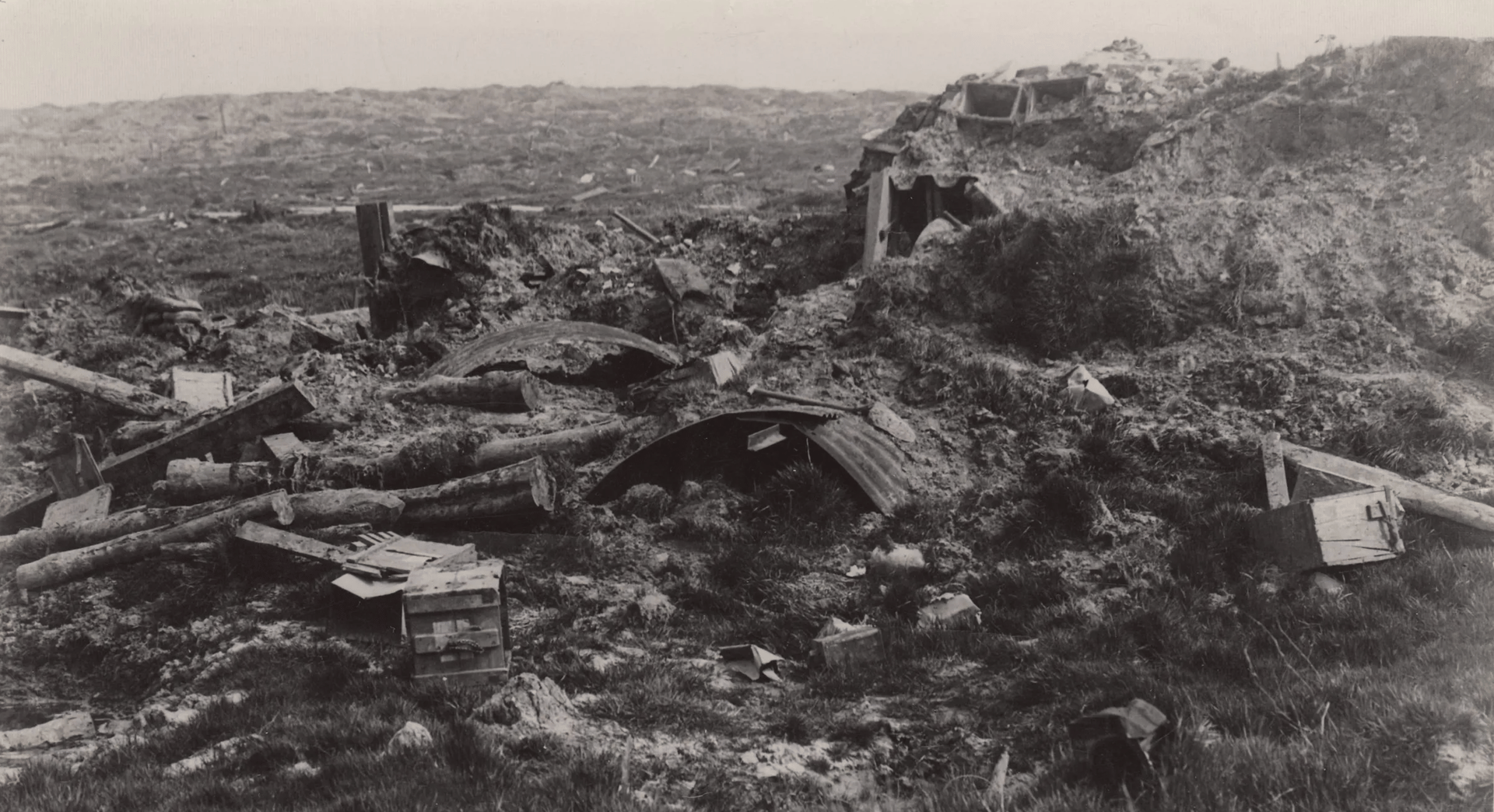
Return to the Salient
June - August 1916
Mount Sorrel
After several weeks of rest, the 49th Battalion returned to the Ypres Salient for trench rotations principally at Mount Sorrel. Not far away from Sanctuary Wood, it had seen fighting of similiar fercosity during the German attack on the 2nd of June and subsequent Canadian counterattacks. Heavy heat mixed with countless unburied bodies left a lasting impression of the trenches and the frontline on many of the new reinforcements. To make matters worse, soon after arrival into the trenches on their first rotation back, the Battalion suffered dozens of casualties under a heavy bombardment. Numerous others would follow in the proceeding weeks as the 49th Battalion held the line.
The Adkins Brothers
William, Martin and George Adkins were three brothers from Westlock, Alberta, who all travelled to Edmonton to enlist into the 49th Battalion. William was killed by shell fire in May of 1916, and Martin mortally wounded on the first trench rotation back since the Counter-Attack. He wrote his final dying words on a piece of paper.
In July 1916, 49th Battalion Scouts observed a German night patrol in No Man's Land. Anticipating it being repeated, an ambush was planned for the following night. Led by Sergeant Leslie E. Rawlinson, he recounted his experiences to a friend after the engagement.
On the Battlefields of Flanders,
Good bye Mother, good bye all.
Mart.
He died before aid could be administered and was buried with his brother in a battlefield cemetery on the edge of Sanctuary Wood. Out of the three brothers, George would be the only survivor.

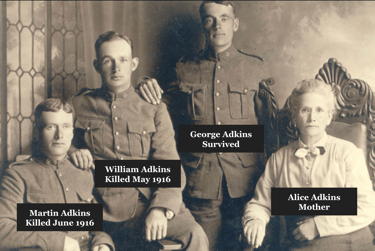
"After they had lain in wait for some considerable time the German patrol was seen approaching. Not a move was made until the enemy was close up to them when the bombers let fly their Millses and the others emptied their revolvers into the surprised patrol, six of whom were killed outright. Our patrol realized that the German machine-guns would open up at any moment and lost no time getting back to our trenches, but they were able to bring a wounded German along with them. He had to be carried along roughly and quickly but our patrol might have spared themselves the effort for the poor fellow on examination was found to have been very badly wounded and he died before he could be questioned. Our fellows feeling very elated over this encounter in No Man’s Land for we suffered no casualties.”
Private Frank Hassé, 49th Battalion.
An Ambush in No Man's Land - July 14th 1916
Training for Armageddon - The Somme 1916
Since the 1st of July 1916, a joint French-British offensive had been raging 100 kilometres South in the Somme sector of the Western Front. Massive losses were being sustained by both side and it became clear that it would be the Canadian Corps who were next to be called into the fray. In late August 1916, the 49th Battalion was moved behind the lines to begin specialist training before beginning the journey to the Somme front.
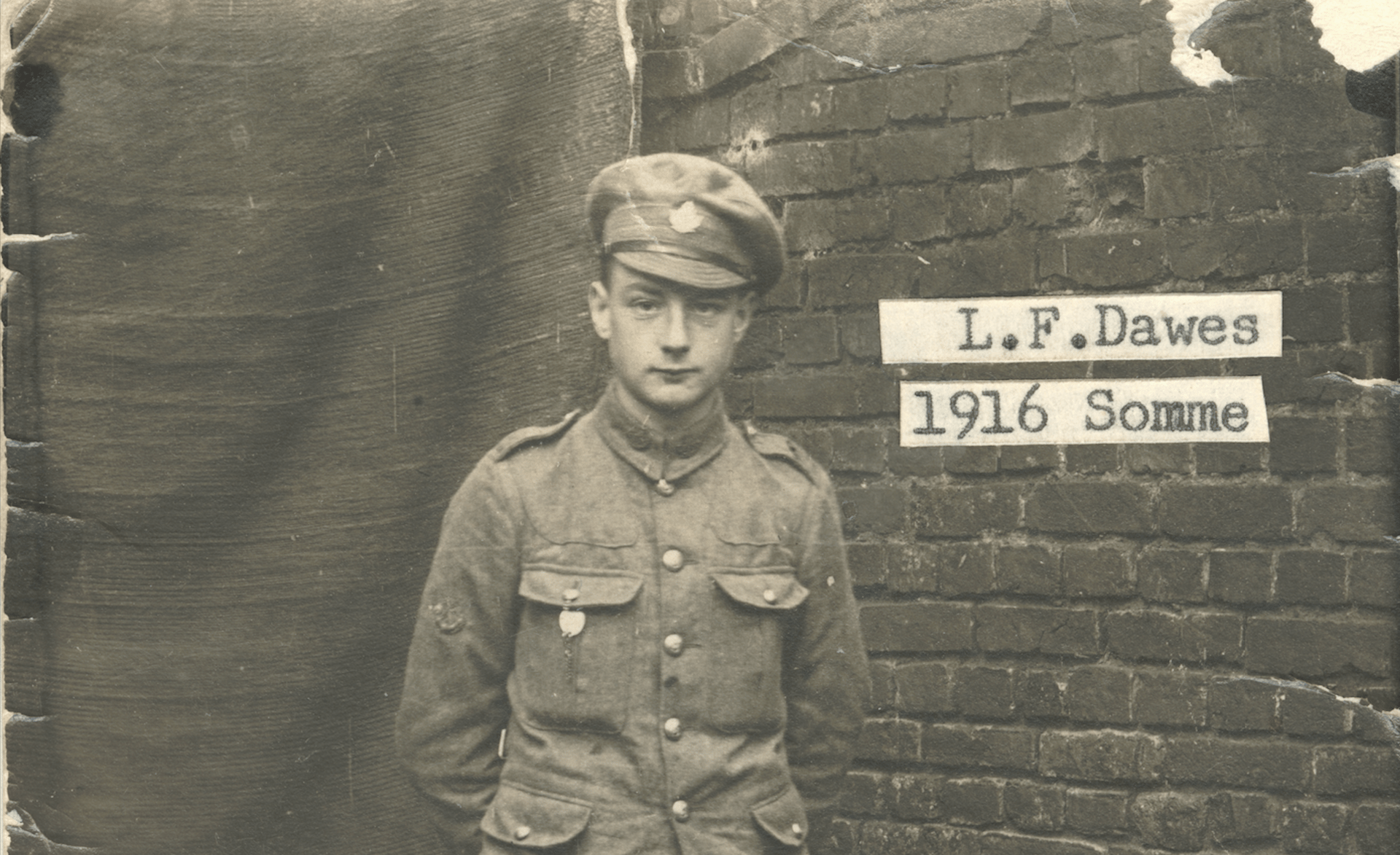
The Somme
September-October 1916
The Long March
At the start of September 1916, the 49th Battalion left Flanders and proceeded South by train to the Somme. Disembarking at the small village of Conteville, over the course of several days the 49th Battalion marched some 80 kilometres before reaching the city of Albert. From the heights of Tara Hill just to the East of Albert, the Fortyniners could see with full effect the offensive.
“When he first joined us he was very jolly and talkative and took part in everything that was going on… He rejoined the Battalion in the latter part of August and we noticed a big change in him. He seemed morose and to have some trouble on his mind.”
Suicide at Talmas
One of the most prolific moments of the long march to the Somme battlefront was the suicide of Private Stewart C. Hines on the 11th of September. He had only rejoined the 49th Battalion a few weeks prior after an extended time with a Railway Construction unit. According to a friend;
Lance Corporal David A Barbour, 49th Battalion.
“The artillery is something fierce here all the time it never stops, day or night… watching the guns and shells, it was a sight. The side of the hill and top of the ridge, across the valley from us was one continual flash of fire, we are expecting something big to start soon.”
Private Herbert Stewart, 49th Battalion.
Private Stewart C. Hines was 28 years of age when he died of a self inflicted gun shot wound. He was the first member of the 49th Battalion to die on the Somme.
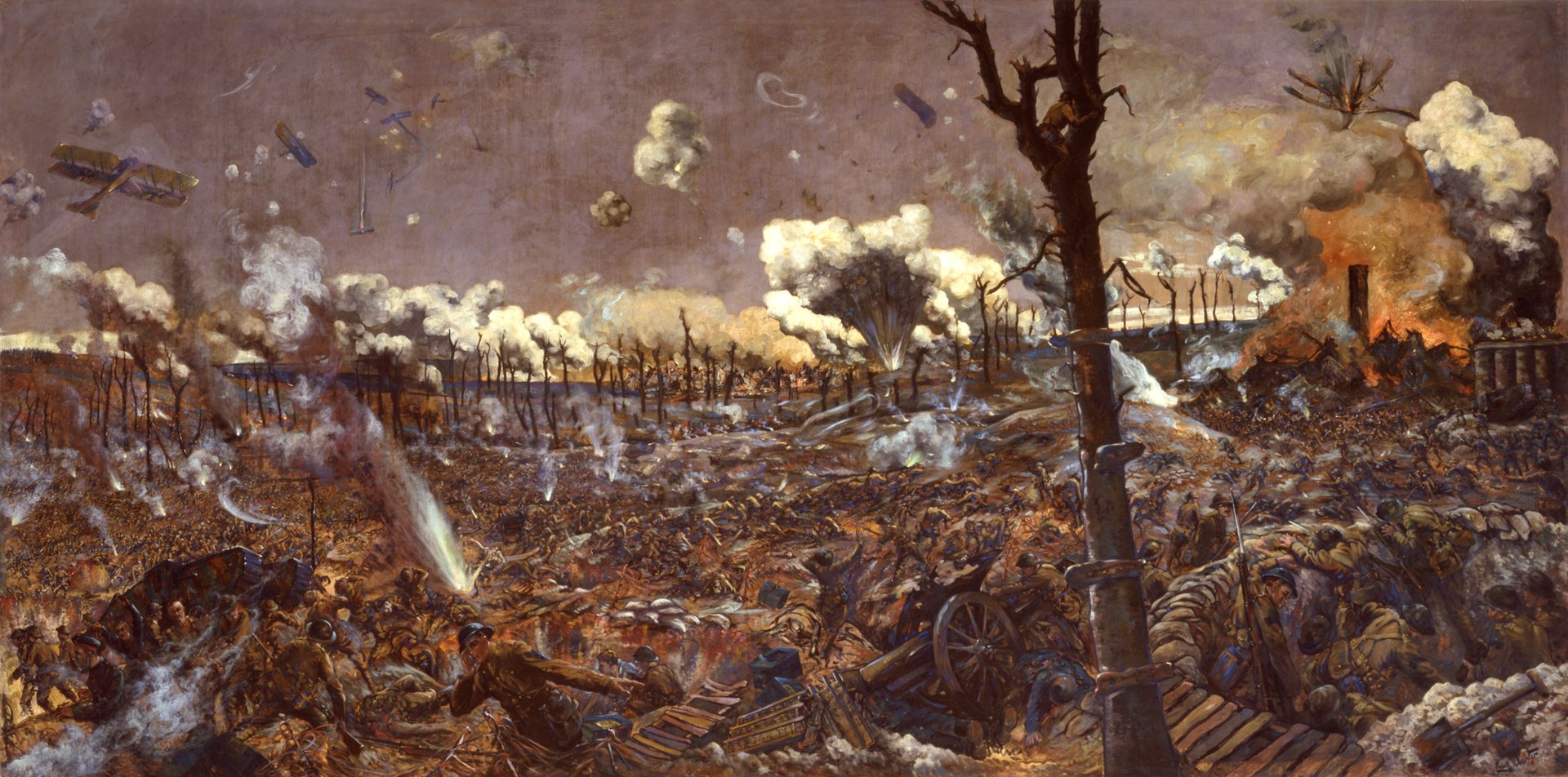
Courcelette
September 15-18 1916
The 15th of September
On September 15th, a massive attack began along the Somme front. On the northern flank, the Canadian Corps reached the outskirts of Courcelette. The 49th Battalion, initially in reserve, was brought forward with fresh troops to renew the assault.
After crossing shell-swept ground, the 49th reached their positions at Sugar Trench. The plan was for all four companies to leapfrog through the 42nd Battalion and Princess Patricia's Canadian Light Infantry to capture Fabeck Graben and the Chalk Mound. However, a failure to secure the first objective in it's entireity forced a change.
At 8:30 PM, "B" and "D" Companies advanced toward the Chalk Mound, facing open ground but suffering few casualties. "C" Company supported the Patricia’s, while "A" Company and the machine guns held back.
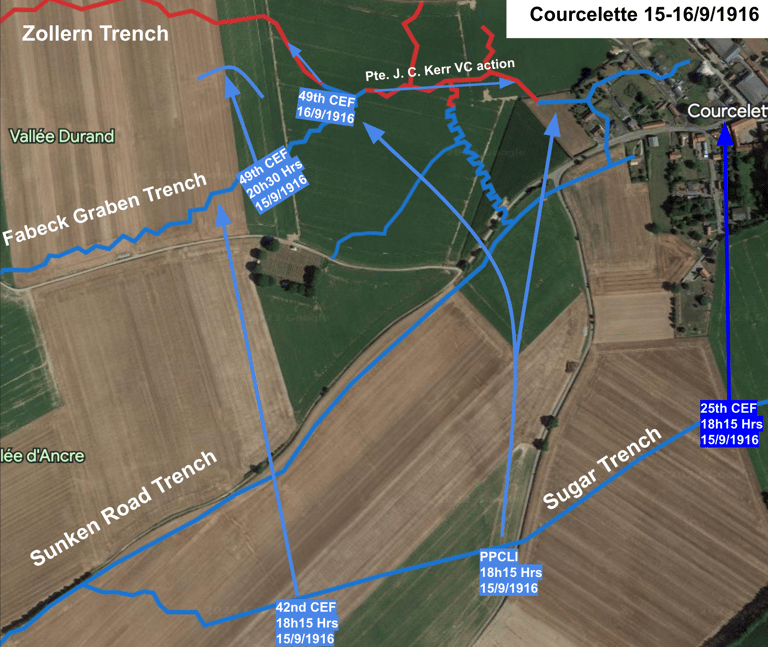

16th of September
Headquarters Wiped Out
Early on in the morning of the 16th, disaster struck the Headquarters of the 49th Battalion when a high explosive shell exploded above their dugout, entombing many of the occupants. Some managed to escape through a ventilator shaft but many would not be so fortunate. Within a moment, the Battalion staff and Headquarters had been wiped out.
Cut Off at the Chalk Mound
For "B" and "D" Company, who captured the Chalk Mound the night before, consolidation continued as casualties mounted. Within hours, "D" Company lost all but one officer. By daybreak, without a communication trench to the allied lines, the men at the Chalk Mound were cut off and forced to hold on without the hope of reinfrocements.
Renewed Efforts at Fabeck Graben
The situation for "C" Company at Fabeck Graben was far more stable. Mixed in with soldiers from other Canadian Infantry Battalions, a barricade had been established within the trench at the point it met the German held sections of trench.
A new assault from Fabeck Graben against Zollern Trench was planned to start at 5:00 P.M. involving the Royal Canadian Regiment and 42nd Battalion (RHC). The 49th Battalion was tasked with leading two bombing parties against enemy held trenches. One was to bomb up Zollern Trench which was ultimately beaten back. The other saw the successful capture of 250 yards of German held trench, 62 prisoners and the awarding of the first Victoria Cross for the 49th Battalion (Edmonton Regiment).
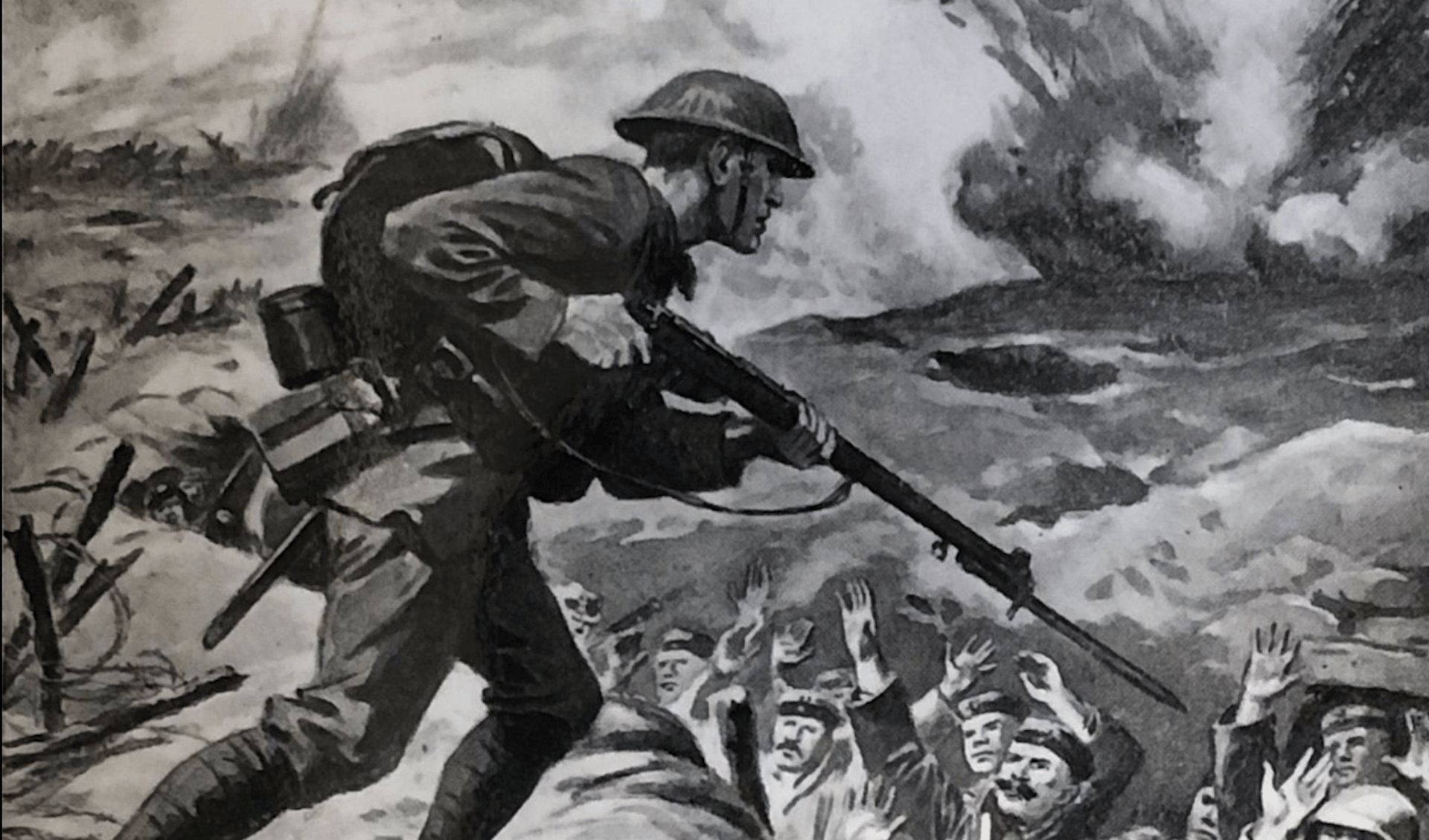
Chip Kerr VC
September 16 1916
Victoria Cross Action
A squad of twelve men, led by Corporal Ralph V. Patterson, was assigned a minor operation in which Private Chip Kerr was designated the lead bayonet man. His task was to neutralize the enemy sentry silently, locate their positions, and guide the bombers to their targets. Kerr advanced ahead of the squad, scaling the Canadian barricade and moving towards the German obstacle. Alerted by the approaching party, the enemy sentry threw a grenade, which injured Kerr’s side and blew off the top of his forefinger. Despite his wounds, Kerr pressed on, climbing the battered parados to gain a clear view of the German garrison. Using his limited supply of bombs and a borrowed rifle after his own malfunctioned, he directed his team’s assault with remarkable composure, enduring constant enemy fire. As the Germans retreated under heavy casualties, Kerr pursued them alone into the trench, navigating through the carnage. He advanced cautiously, his rifle at the ready, and eventually confronted a large force. Despite being outnumbered—sixty to one—Kerr stood his ground, his wounds ignored, and demanded their surrender. The Germans complied, signaling their capitulation with a white rag. Kerr directed them over the parados and into captivity just as the remainder of his squad arrived. This extraordinary feat, achieved under extreme odds, concluded with Kerr being evacuated to England for medical treatment, unaware he had been put forward for the Victoria Cross.
A Failed Attack on Zollern Trench
At 5:00 P.M., the RCR and 42nd Battalion went over the top advancing on Zollern Trench from Fabeck Graben. They encountered heavy machine gun and rifle fire and were virtually annihilated. From the Chalk Mound,"B" and "D" Company's could do little but watch.
Holding until Relief
The 49th Battalion held their ground until relief could be completed. "B" and "D" Company's managed to dig a trench back to Fabeck Graben from the Chalk Mound and were relieved on the 18th of September. The rest of the Battalion had been relieved a day earlier.
The Cost of Courcelette
Over 260 Fortyniners were Killed, Wounded or reported Missing in Action. Not enough stretchers nor stretcher bearers were available throughout the action for the wounded. It was therefore impossible to evacuate many apart from the walking wounded past the Regimental Aid Post in the Sunken Road. Worse still was the wounded at the Chalk Mound who had little hope of being saved.

Rest & Work at Albert
Upon their relief, the 49th Battalion marched back to Albert. Billeted near the train station, they were not out of the reign of German artillery. Some men were killed in their sleep whilst others were killed on the daily working parties which kept the vital infrastructure working. There was little that could be done to avoid such casualties but one thing was certain, the men were safer in Albert than on the frontline.
Attacks North of Courcelette
After the capture of Courcelette, the Canadian Corps continued it's advance Northward in a series of set piece attacks. By the end of the month, the Canadian Corps had captured the German line running on the slope just North of Courcelette. Beyond them was Regina Trench. Situated on a reverse slope, it was unobservable from the Canadian positions. It's capture would be a must if the attack was to continue.
Holding Hessian Trench
In the wake of the disastrous attack on Regina Trench by the Canadian Mounted Rifles Brigade, the 49th Battalion was called forward to relieve the weary beaten back attackers who were now back in their jumping off trench. For two days, the 49th Battalion held the trench. Heavy rains turned the frontline trench into a morass of mud and the threat of a German counter attack at any moment reigned supreme.
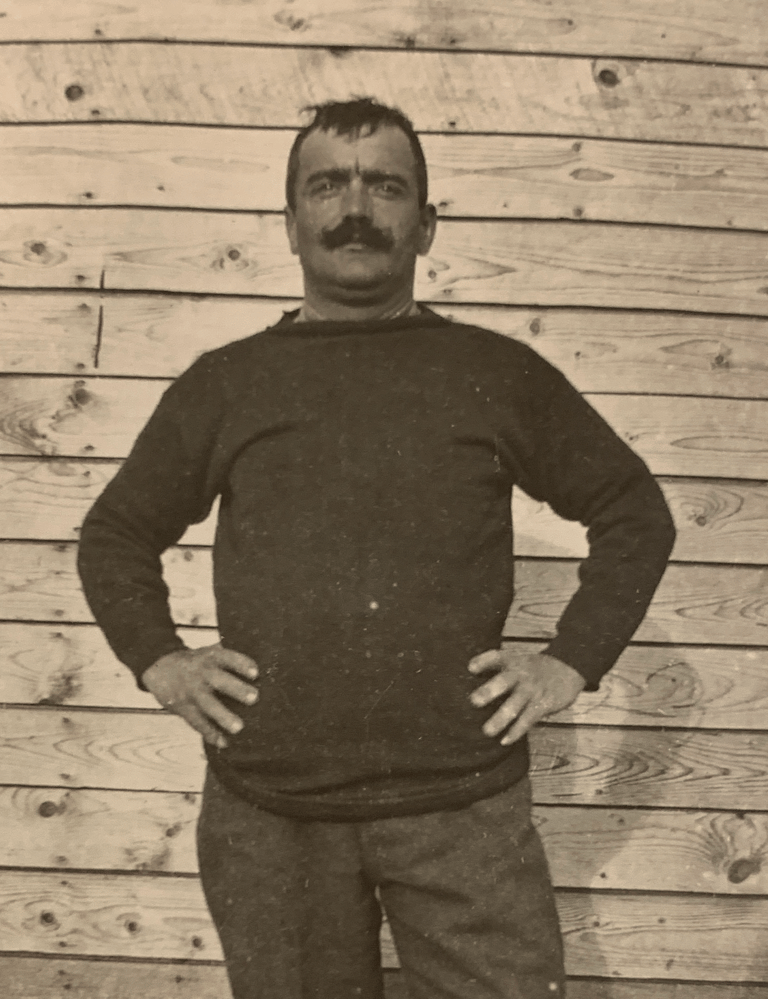

Private Jean Ferrat
Born in Marseille, France - Jean Ferrat was a veteran of the French army before immigrating to Alberta. He was mortally wounded on a working party in September 1916.
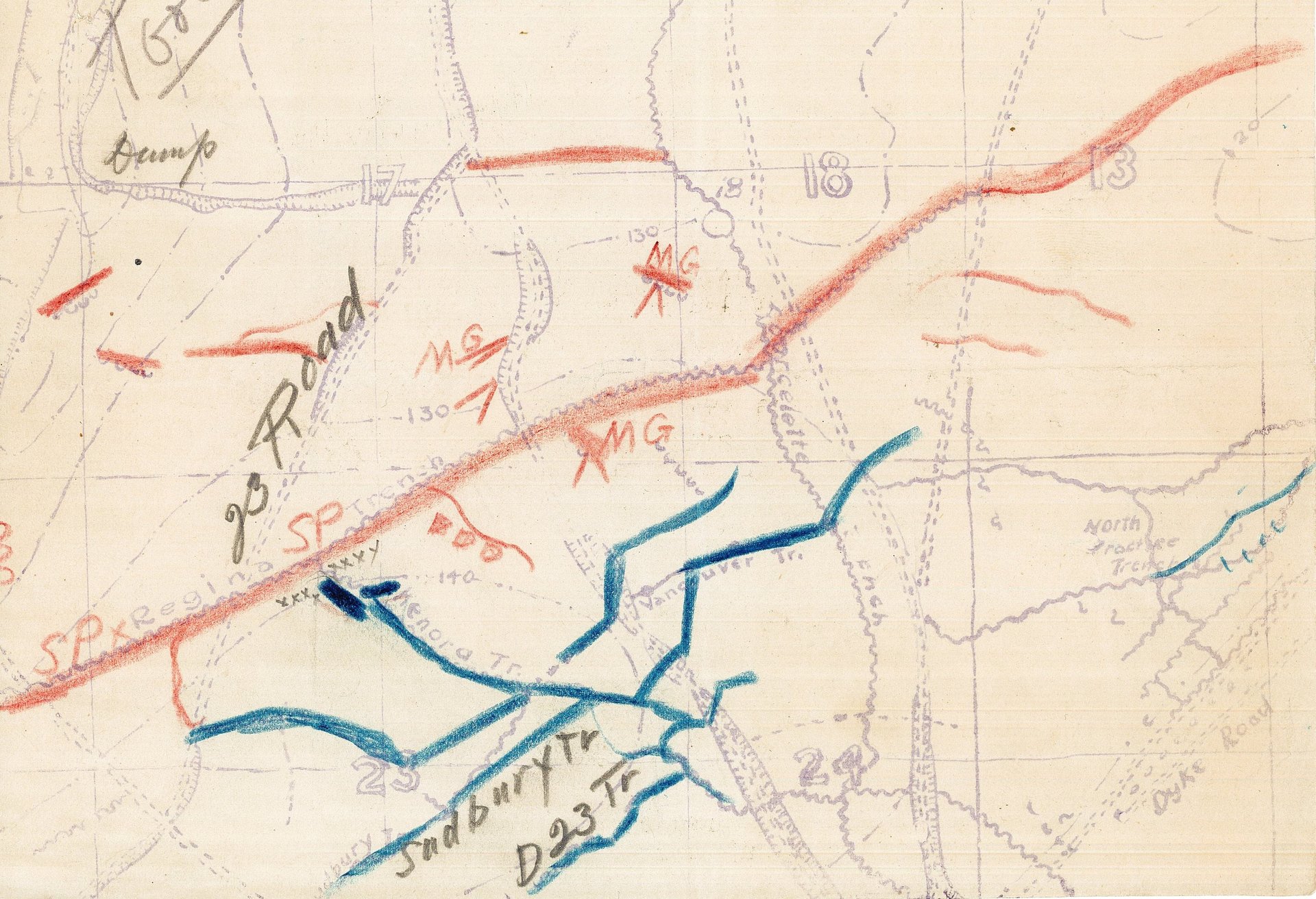
Regina Trench
October 8 1916
Apprehensions
After combat at Courcelette and the tour of trenches at Hessian Trench, the weary Fortyniners were apprehensive when called back to launch an attack on Regina Trench. They had already seen the devastation on the Canadian Mounted Rifles who had attempted the same only a week prior.
Serious Problems
The artillery which was meant to be softening German defences was missing it's mark. Most of the barbed wire defending Regina Trench was untouched. Worse still, the jumping off tapes for the men were laid out incorrectly and would send "C" Company in the wrong direction.
The Attack
Shortly before dawn on the 8th of October, the attack began. The Fortyniners lept off from the jumping off trenches, crossed the crest of the ridge and advanced on Regina Trench in what was known as Death Valley. Many of them would never be seen again.


Len Holloway's Report
Scout Sergeant Holloway was sent out on a patrol in No Man's Land to ascertain if the wire had been cut. His finding's revealed that it had only been partially cut and "D" Company would have virtually no chance unless the wire could be cut. It never was in time.

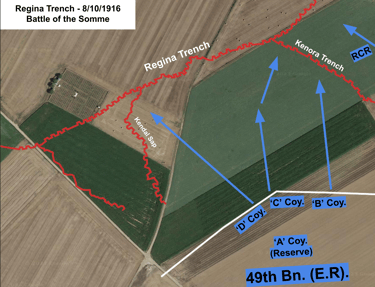
The Left Flank - Anhilation
"D" Company and part of "C" Company faced annihilation when advancing on Regina Trench. Virtually no headway was made and the attack broke down in front of Regina Trench. A saving grace was a series of large shell holes just before Regina Trench that allowed men to seek cover from until they could pull back that night. Others found cover in Kendal Sap.
The Right Flank - Do or Die
Entry into Kenora Trench was swiftly made by "B" Company and elements of "C" Company who were mislead by the inaccurate jumping off tapes. Attempts were made to breach into Regina Trench through the junction point but this was blocked by heavy resistance. A bomb battle lasting nearly 12 hours commenced and ultimately the call to withdrawl was given.
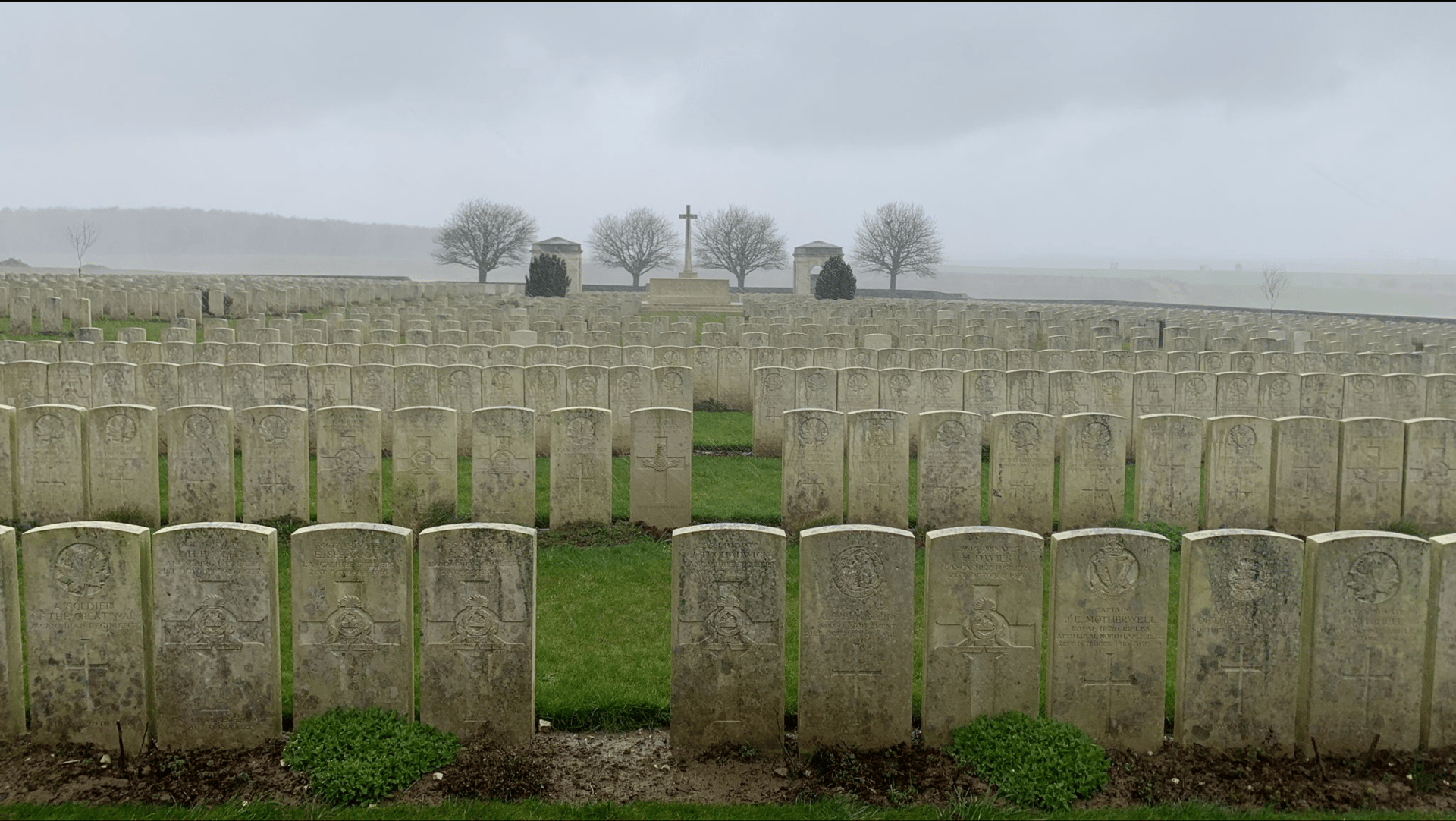
Journey's End
Of the 437 Fortyniners that went into the action, only 226 came out. The rest were killed or wounded in a fateful attack with nothing to show for their sacrifice. The survivors were worn out, understrength and in need of rest. They were sent North to the Vimy sector.
